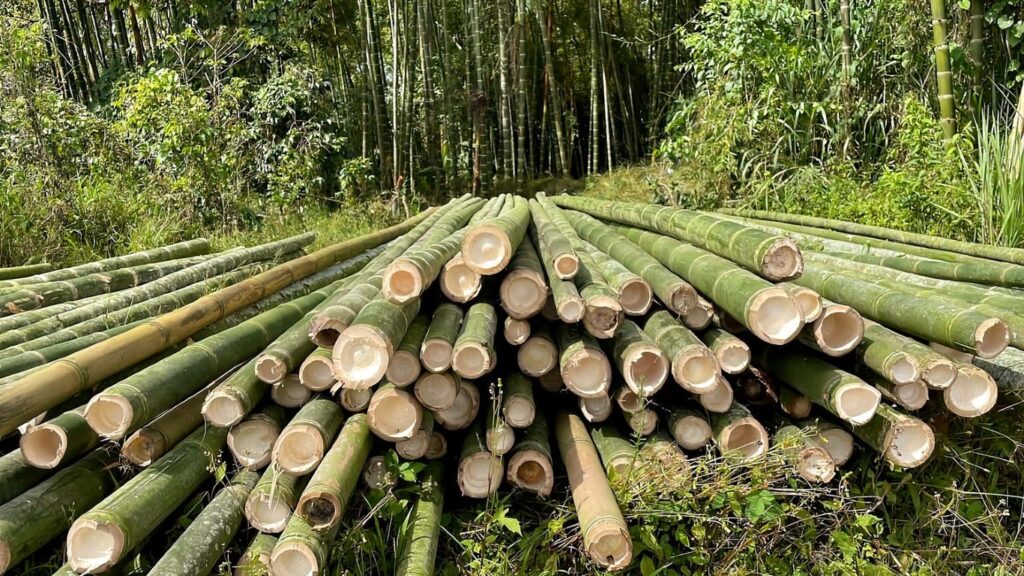Introduction

Imagine owning a crop that doesn’t just grow back year after year but increases in value as the world tightens regulations on deforestation, and industries scramble for sustainable alternatives. Bamboo, often called “green gold,” is poised to become the backbone of India’s green industrial revolution. With environmental laws set to become stricter by 2026 and 2030, and with India being the world’s largest importer of bamboo products, commercial bamboo farmers are uniquely positioned to profit not just in the short term, but for decades to come.
India is standing at the cusp of a historic opportunity, and those who invest in bamboo farming now will be tomorrow’s agro-industrial leaders. This blog explores the forces converging to make bamboo a lifelong asset for Indian farmers and entrepreneurs.
- India’s Upcoming Environmental Laws: A Game Changer

India is aligning with global sustainability goals under the Paris Agreement. As part of this commitment, significant legal changes related to tree-cutting and forest preservation are expected to come into force:
- By 2026: Cutting down fully grown trees without proper permissions or replantation measures may become a criminal offense.
- By 2030: Cutting any tree—even on private property—is expected to attract heavy penalties or criminal charges unless the tree is part of a registered commercial plantation.
These laws are designed to protect forests, maintain ecological balance, and reduce India’s carbon footprint. However, they will also create a timber supply crisis, as traditional wood sources are restricted. This opens the door for legal, sustainable alternatives like bamboo to meet the ever-growing demand.
India’s wood-consuming industries—including construction, furniture, paper, and packaging—will urgently need a replacement. Bamboo, with its rapid growth cycle and renewable nature, is the most promising alternative.
2. Bamboo: The Legal Alternative to Timber
Bamboo is not classified as a tree—it is a grass. This simple botanical fact will have enormous economic consequences in a future where tree-cutting is heavily regulated. Bamboo will remain legal to harvest, trade, and process without the red tape that restricts timber.
Why Bamboo Fits the Bill:
- Grows back after each harvest without needing replantation.
- Reaches maturity in 3–5 years, compared to 15–40 years for hardwood trees.
- Requires minimal inputs and thrives in diverse climates.
- Prevents soil erosion and absorbs 35% more carbon dioxide than trees.
Now consider this: In every modern Indian home, approximately 30% to 50% of materials are wood-based. That includes:
- Furniture
- Doors and windows
- Kitchen cabinets
- Wardrobes
- Flooring
Once timber becomes scarce due to legal restrictions, the entire housing, infrastructure, and furniture ecosystem will face a shortage.
The Outcome:
- Skyrocketing demand for bamboo as a timber substitute
- Premium pricing for high-quality bamboo poles and boards
- Industries racing to secure long-term bamboo supply contracts
Bamboo won’t just be a crop; it will become a strategic resource.
- India’s Bamboo Market Paradox

India is ironically the largest importer of bamboo products in the world, accounting for nearly 38% of global imports. This is despite having the second-largest area under bamboo cultivation globally, after China.
What’s the issue?
- Most bamboo in India grows wild or unorganized, not in commercial plantations.
- Lack of structured farming and harvesting prevents industrial use.
- In contrast, China grows bamboo commercially with industrial integration—from plantations to processing to exports.
This mismatch creates a huge supply gap:
- Industries want bamboo, but Indian farmers aren’t growing it commercially at scale.
- Result: India ends up importing finished bamboo products like furniture, flooring, chopsticks, incense sticks, and decorative items.
The Solution:
- Establishing commercial bamboo plantations to meet domestic demand.
- Reducing reliance on imports and saving billions in foreign exchange.
- Creating a domestic ecosystem of farmers, processors, manufacturers, and exporters.
Bamboo farm owners who act now can be the pioneers of this ecosystem.
- Industrial Demand Once Raw Material Is Available

India is experiencing an explosive demand for eco-friendly materials. Bamboo fits the bill perfectly for:
- Furniture manufacturing (beds, tables, chairs, partitions)
- Biofuel and pellets (clean energy from bamboo biomass)
- Construction (panels, scaffolding, flooring)
- Decorative products (lamps, vases, wall decor)
- Pulp and paper (low-lignin pulp alternative)
- Agarbatti and incense sticks (huge domestic market)
- Packaging and textiles
Right now, a lack of bamboo raw material is the only hurdle stopping India from building these industries.
Once farmers begin to supply quality bamboo at scale:
- Processing units will emerge rapidly near production zones.
- Farmers can earn both from raw bamboo and value-added products.
- Private companies will offer buyback contracts and invest in rural infrastructure.
Commercial bamboo farms will not just be farms—they will be economic zones.
- A Lifetime Asset: Bamboo’s 70–110 Year Commercial Lifespan

Bamboo is not a one-time crop. A well-planned bamboo plantation can:
- Start yielding income in 3 years
- Continue harvesting annually for 70 to 110 years
- Require minimal maintenance after establishment
- Provide consistent cash flow to families for generations
This makes bamboo unlike any other cash crop in India:
- Sugarcane and cotton require replanting every season
- Fruits and vegetables are perishable and price-volatile
- Timber takes decades to mature and is legally sensitive
But bamboo? It just keeps giving.
Financial Benefits:
- One-time planting, multi-decade returns
- Rising market prices due to timber shortage
- High biomass yield per acre compared to traditional crops
For farm owners, this translates to a stable, secure, and scalable income that few crops can match.
6. Government Support and Market Signals
The Indian government has recognized bamboo as a key resource for rural development, environmental sustainability, and import substitution. Key policies include:
National Bamboo Mission (NBM):
- Financial assistance for bamboo cultivation and nurseries
- Support for processing and product development units
Agroforestry Policies:
- Encouragement to plant bamboo on degraded or non-agricultural lands
- Exemption from forest laws when grown in non-forest areas
GST Benefits:
- Bamboo products like furniture and agarbatti have favorable GST rates
- Some value-added products may qualify for input tax credit and export benefits
Private companies are already entering into buyback agreements with bamboo farmers. Institutions and startups are exploring:
- Bamboo flooring and prefab construction
- Bamboo composites and bio-plastics
- Export of handicrafts and wellness products
All signs point to one thing: The bamboo industry in India is about to explode, and commercial farm owners will be the fuel behind this boom.
Conclusion: Invest in the Future, Plant Bamboo Today
India is on the brink of a green revolution. As environmental laws tighten and the need for sustainable materials rises, bamboo stands out as the ultimate substitute for timber. It is fast-growing, legally permissible, highly versatile, and increasingly in demand across industrial sectors.
The global bamboo market is expanding, but India has the unique combination of climate, land, labor, and demand to lead it. However, the supply chain must begin at the roots—with farmers.
If you own land or are considering long-term investments in agriculture, bamboo is not just an option—it’s a gold mine. It has the power to generate income for an entire lifetime, and even build generational wealth.
By planting bamboo today, you’re not only securing your future but helping India transition to a greener, more self-reliant economy.

